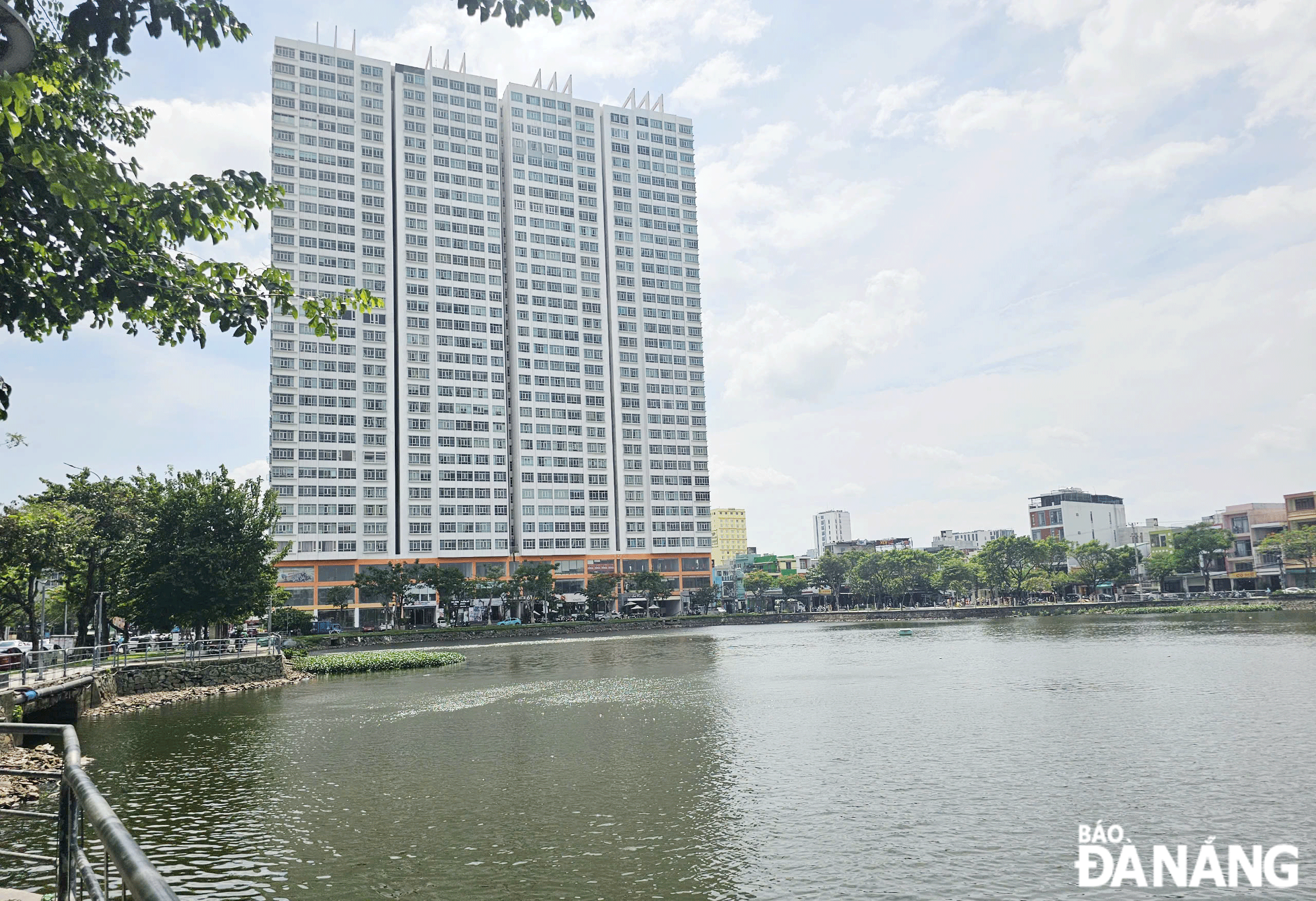Optimising aesthetic value of lakes and ponds
Over recent years, Da Nang has implemented various measures to develop the landscape of local lakes and ponds, enhancing environmental protection and maximising the potential and inherent advantages of these water bodies.
 |
| The Thac Gian Lake in Thanh Khe District has significant potential for developing natural scenic values, ensuring aesthetics, and creating an architectural highlight within the urban core. Photo: Tran Truc |
In December 2021, the Da Nang People’s Committee issued Decision No. 4001/QD-UBND, approving a list of lakes, ponds, and wetlands in Da Nang that cannot be filled in. This legal framework supports local authorities in managing, protecting, and effectively utilising lakes. In Cam Le District, seven lakes currently function as water and wastewater regulators and help to cool the air.
The district-based People’s Committee has worked with the People’s Committees of wards with lakes to encourage organisations and local households to refrain from dumping waste, especially monitoring for and penalising cases of illegal waste dumping. Moving forward, a detailed plan will be developed to continue protecting the Cau Do River, a crucial water supply for the city, following the city’s master plan for 2030 with a vision to 2050.
Thanh Khe District, with the largest number of lakes in the city, includes 29/3 Park Lake, Thac Gian, Vinh Trung, Xuan Hoa A, Phan Lang 1, Bau Lang, the An Khe Ward Regulating Lake, and the 2ha Lake. Regular efforts are made to clean, assess water quality, thin fish populations, and install aquatic plant rafts to address odour issues.
To capitalise on the development potential of local lakes, in 2019, Thanh Khe District People’s Committee held a competition for urban planning and landscape architecture for 29/3 Park. Based on these proposals, the Da Nang People’s Committee has sought and received approval from the city’s People’s Council to invest in a project to upgrade and improve 29/3 Park, scheduled to commence in 2025.
The district has also launched a competition to select an urban planning and architectural design proposal for the Thac Gian - Vinh Trung Lake area and along the Phan Lang Canal. Currently, the landscape planning and design project for Thac Gian - Vinh Trung Lake is in the preparatory stages and is expected to start in 2025.
Mr. Ho Thuyen, Chairman of Thanh Khe District People’s Committee, stated that alongside local governance, the district emphasises collaboration with the Viet Nam Fatherland Front, associations, unions, and the public to manage resources and protect the environment. At the grassroots level, wards with lakes have established self-managed environmental protection initiatives, such as the "Sustainable Community Development" model in Thanh Khe Tay Ward's 2ha Lake area and the "Youth Green Zone" model at Bau Lang Lake in Thanh Khe Dong Ward.
The development of architectural landscapes around lakes, particularly those in urban centres, helps ensure urban aesthetics while adding architectural highlights. These areas connect major roads like Le Duan, Ham Nghi, Nguyen Van Linh, and Ly Thai To, creating continuous spaces that attract residents and tourists to commercial and tourism activities, aligning with the city’s night economy development goals.
In the city centre, Hai Chau District includes historic lakes, such as the Hai Chau Village Lake, a national historical relic (0.059ha), the Do Xu Lake (6.86ha), and Dao Xanh Lake (25.089ha). The district People’s Committee has integrated these lakes into the city's "Urban Pollution Treatment and Lake Environment Improvement Plan," conducting routine environmental management and protection.
Efforts focus on raising public awareness about environmental protection around lakes and canals and enforcing administrative penalties for water pollution violations. According to Mr. Nguyen Van Duy, Vice Chairman of the Hai Chau District People’s Committee, the district is currently developing a project to manage, protect, and sustainably develop the wetland ecosystem along the Han River.
This includes the Dao Xanh area and the wetlands stretching from Tran Thi Ly Bridge to Tuyen Son Bridge, covering approximately 100ha, with about 30ha in the southwest near Tran Thi Ly Bridge and along the Han River up to Tuyen Son Bridge.
Managing and sustainably developing the Dao Xanh wetland ecosystem and the Han River’s wetland areas along Thang Long Street is essential. It aims to increase green spaces, create an ecological highlight for the district, and introduce eco-tourism and community-based tourism, providing public spaces for recreation for both residents and visitors. Additionally, this approach contributes a scientific foundation for planning the district’s economic and social development strategies, supporting environmental conservation throughout Hai Chau District and the wider city.
Reporting by TRAN TRUC - Translating by TRUC VY








